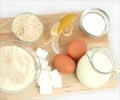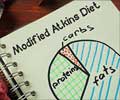Students at Appalachian State University have finally solved the scientific mystery behind the explosive reaction produced by adding Mentos to Diet Coke.
The scientific mystery behind the explosive reaction produced by adding Mentos to Diet Coke appears to have been solved by students at Appalachian State University.
Through a series of experiments, the students found that a reaction between the rough surface of the Mentos, and the potassium benzoate and aspartame contained in Diet Coke were responsible for the famous geyser reaction, in which the liquid can spew up to 10 feet."If you drop a pack of Mentos into a bottle of Diet Coke, you get this huge fountain of spray and Diet Coke foam coming out. This was a good project for my students to study because there was still some mystery to it," New Scientist quoted Tonya Coffey, a physicist at Appalachian State University in Boone, North Carolina, as saying.
There were many theories put forth for explaining the reaction and some bloggers speculated that it is an acid-base reaction because Coke is acidic. In fact, experiments in a 2006 edition of the Discovery Channel programme Mythbusters suggested the chemicals responsible for the reaction are gum arabic and gelatine in the sweets, and caffeine, potassium benzoate and aspartame in the Coke.
However, there were no rigorous scientific studies of the reaction until now. But, Coffey and a team of students tested the reactions between Diet Coke and fruit Mentos, mint Mentos, and various ingredients such as other mints, dish-washing detergent, table salt and sand. They also used other fizzy liquids such as caffeine-free and sugary colas, as well as soda water and tonic water, to compare the reactions.
They carried out all the reactions in a bottle angled at 10 degree off vertical and recorded the fountain trajectories on video. They also measured the total mass lost in the fountain and the influence of the sweet's surface roughness.
The results indicated that Diet Coke created the most magnificent explosions with either fruit or mint Mentos, the fountains travelling a horizontal distance of up to 7 metres. However, caffeine-free Diet Coke did just as well, suggesting that caffeine does not accelerate the reaction, at least at the normal levels in the drink.
Advertisement
It is the rough, dimply surfaces of Mentos that encourage bubble growth because they efficiently disrupt the polar attractions between water molecules, creating bubble growth sites.
Also, low surface tension plays a vital role in helping the bubbles to grow quickly. Measurements showed that the surface tension in water containing the sweetener aspartame is lower than in sugary water that justifies why Diet Coke creates more dramatic fountains than sugary Coke.
One more factor controlling the reaction is the coatings of Mentos contain gum arabic, a surfactant that further reduces surface tension in the liquid. Rough-surfaced mints without the surfactant did not create such large fountains.
Mentos are also somewhat dense and sink rapidly, creating bubbles quickly that triggers further bubbles as they rise. Crushed Mentos that fell more slowly created puny fountains that only travelled about 30 centimetres.
"Middle-school teachers are getting their students out onto the baseball field next to their school and doing this reaction, and their students love it. It's a great way to get students excited about science and learn something new," said Coffey.
Source-ANI
RAS/L











